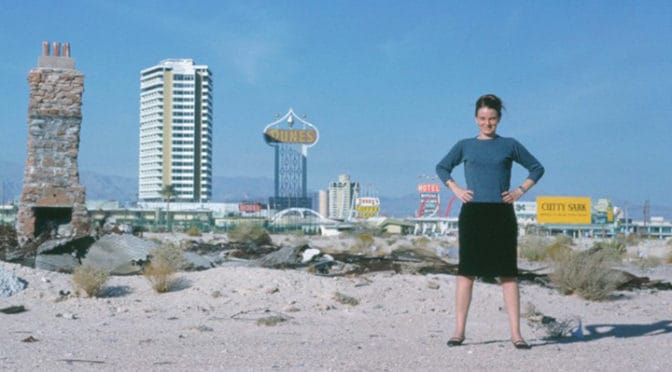
Vertical Geometries | The City in Art
by Dr. Mark David Major, AICP, CNU-A
Today’s issue of The City in Art returns to another innovative painting by the Swiss artist Paul Klee. The striking image Klee creates in Castle and Sun (1928) uses different geometric shapes and various shades of color, similar to the previously seen Klee’s Highways and Byways. The lone sun shines in the ingeniously designed sky with strong lines and the structure of the geometric shapes defining the castle/city. In addition, various rectangular sizes add depth to the abstract image. The complex and contrasting use of colors by Klee in this painting – in combination with the varying sizes of shapes – provides a subtle illusion of depth, independently of any proper perspective in gross terms otherwise lacking in the two-dimensional plane of the canvas. Klee executes the cubism technique of this painting in his patented style. The painting possesses a mix of the abstract with reality while figures are deconstructed to form interesting geometric shapes. 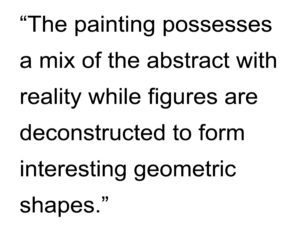 The clay colored background gives a clearer sense of how the shapes seem to form a city skyline of intense color and light. Klee uses pops of yellow to bring the eye in and break up the browns everywhere else. This oil on canvas painting has a complex array of triangular figures to provide an imaginary metropolis of shapes. The touch of realism, angles, and its use of color creates a city of geometric shapes. Paul Klee’s imaginary works continue to inspire and intrigue (Source: Totally History). Klee’s Castle and Sun, in particular, is regularly used by teachers for early education in artistic technique. At that age, school children (and perhaps their teachers) are unaware of the subtly complicated and innovative beauty of this painting by Klee.
The clay colored background gives a clearer sense of how the shapes seem to form a city skyline of intense color and light. Klee uses pops of yellow to bring the eye in and break up the browns everywhere else. This oil on canvas painting has a complex array of triangular figures to provide an imaginary metropolis of shapes. The touch of realism, angles, and its use of color creates a city of geometric shapes. Paul Klee’s imaginary works continue to inspire and intrigue (Source: Totally History). Klee’s Castle and Sun, in particular, is regularly used by teachers for early education in artistic technique. At that age, school children (and perhaps their teachers) are unaware of the subtly complicated and innovative beauty of this painting by Klee.
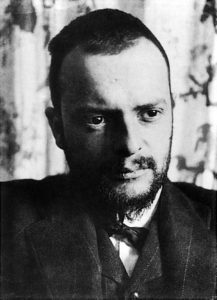 About Paul Klee
About Paul Klee
Paul Klee (1879–1940) was born near Bern, Switzerland. He studied drawing and painting in Munich for three years beginning in 1898. By 1911, he was involved with the German Expressionist group Der Blaue Reiter (The Blue Rider), founded by Wassily Kandinsky and Franz Marc. In 1914, Klee visited Tunisia. The experience was the turning point. The limpid light of North Africa awakened his sense of color. Klee gradually detached color from physical description and used it independently, giving him the final push toward abstraction. In 1920, Walter Gropius invited Klee to join the faculty of the Bauhaus. Nearly half of Klee’s work was produced during the ten years he taught at the Bauhaus. From 1931-1933, Klee taught at the Academy of Fine Arts in Düsseldorf. When the National Socialists declared his art “degenerate”, he returned to his native Bern. Klee suffered from a wasting disease, scleroderma, towards the end of his life, enduring the pain until his death in Muralto, Locarno, Switzerland, on June 29, 1940 (Source: Metropolitan Museum of Art/Wikipedia).
Visit the Artsy.net Paul Klee page here.
The City in Art is a series by The Outlaw Urbanist. The purpose is to present and discuss artistic depictions of the city that can help us, as professionals, learn to better see the city in ways that are invisible to others. Before the 20th century, most artistic representations of the city broadly fell into, more or less, three categories: literalism, pastoral romanticism, and impressionism, or some variation thereof. Generally, these artistic representations of the city lack a certain amount of substantive interest for the modern world. The City in Art series places particular emphasis on art and photography from the dawn of the 20th century to the present day.


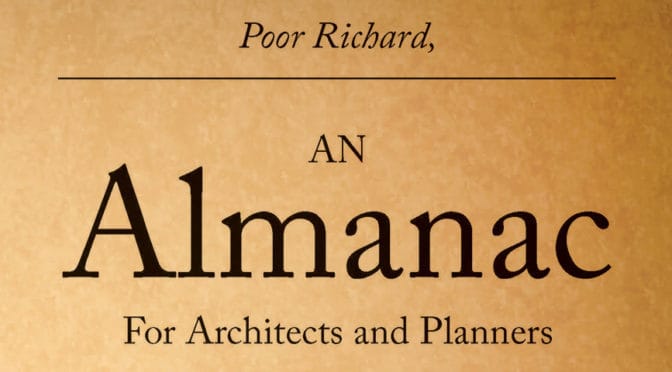
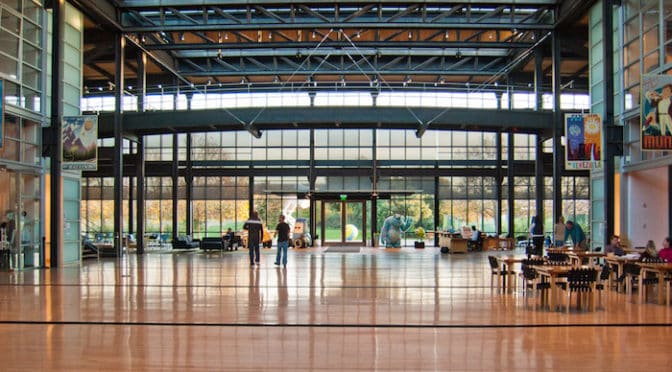

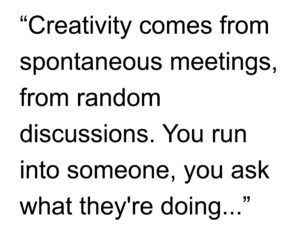 “Steve had the firm belief that the right kind of building can do great things for a culture,” said Pixar’s president Ed Catmull… (John) Lasseter had originally wanted a traditional Hollywood studio, with separate buildings for various projects and bungalows for development teams. But the Disney folks said they didn’t like their new campus because the teams felt isolated, and Jobs agreed. In fact he decided they should go to the other extreme: one huge building around a central atrium designed to encourage random encounters. Despite being a denizen of the digital world, or maybe because he knew all too well its isolating potential, Jobs was a strong believer in face-to-face meetings.
“Steve had the firm belief that the right kind of building can do great things for a culture,” said Pixar’s president Ed Catmull… (John) Lasseter had originally wanted a traditional Hollywood studio, with separate buildings for various projects and bungalows for development teams. But the Disney folks said they didn’t like their new campus because the teams felt isolated, and Jobs agreed. In fact he decided they should go to the other extreme: one huge building around a central atrium designed to encourage random encounters. Despite being a denizen of the digital world, or maybe because he knew all too well its isolating potential, Jobs was a strong believer in face-to-face meetings.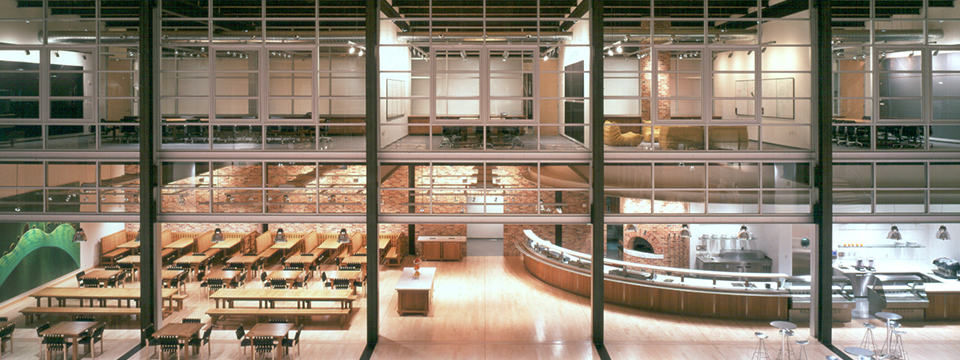 “There’s a temptation in our networked age to think that ideas can be developed by email and iChat,” he said. “That’s crazy. Creativity comes from spontaneous meetings, from random discussions. You run into someone, you ask what they’re doing, you say ‘Wow.” and soon you’re cooking up all sorts of ideas.” So he had the Pixar building designed to promote encounters and unplanned collaborations. “If a building doesn’t encourage that, you’ll lose a lot of innovation and the magic that’s sparked by serendipity,” he said. “So we designed the building to make people get out of their offices and mingle in the central atrium with people they might not otherwise see…” “Steve’s theory worked from day one,” Lasseter recalled. “I kept running into people I hadn’t seen in months. I’ve never seen a building that promoted collaboration and creativity as well as this one.”
“There’s a temptation in our networked age to think that ideas can be developed by email and iChat,” he said. “That’s crazy. Creativity comes from spontaneous meetings, from random discussions. You run into someone, you ask what they’re doing, you say ‘Wow.” and soon you’re cooking up all sorts of ideas.” So he had the Pixar building designed to promote encounters and unplanned collaborations. “If a building doesn’t encourage that, you’ll lose a lot of innovation and the magic that’s sparked by serendipity,” he said. “So we designed the building to make people get out of their offices and mingle in the central atrium with people they might not otherwise see…” “Steve’s theory worked from day one,” Lasseter recalled. “I kept running into people I hadn’t seen in months. I’ve never seen a building that promoted collaboration and creativity as well as this one.”
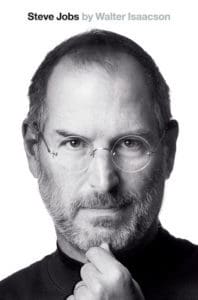
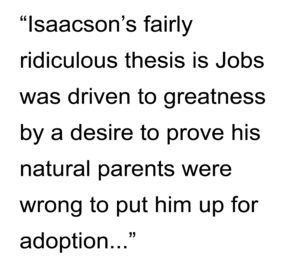 There are many useful, some wonderful insights (usually originating from Jobs himself) contained within, so it is well worth your time to read. In the end, what shines through in the book, despite its problems, is the genius and greatness of Steve Jobs.
There are many useful, some wonderful insights (usually originating from Jobs himself) contained within, so it is well worth your time to read. In the end, what shines through in the book, despite its problems, is the genius and greatness of Steve Jobs.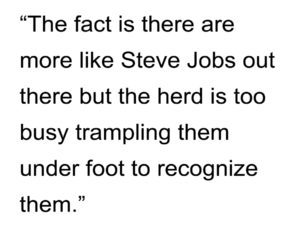 Was Steve Jobs perfect? No, he was human. Personally, I never asked for Apple products to be perfect. I only asked that Apple products be the best in the world and, usually, they were. I never asked Steve Jobs to be anything than what he was: a brilliant businessman, an insight artist, and a (sometimes) source and (often) shepherd of technological innovation. In the end, what was remarkable about Steve Jobs was not that he changed the world but he changed the world in the face of the ‘conventional wisdom’, which is often polite code for the stupidity of the consensus. Frankly, I prefer to live in Jobs’ reality. Along the way, he lived a remarkable life. Surely, that is enough. The world seems smaller without Steve Jobs in it. We have Jobs’ Apple to thank for it but it is also a testament to the legacy of Steve Jobs. He will be missed.
Was Steve Jobs perfect? No, he was human. Personally, I never asked for Apple products to be perfect. I only asked that Apple products be the best in the world and, usually, they were. I never asked Steve Jobs to be anything than what he was: a brilliant businessman, an insight artist, and a (sometimes) source and (often) shepherd of technological innovation. In the end, what was remarkable about Steve Jobs was not that he changed the world but he changed the world in the face of the ‘conventional wisdom’, which is often polite code for the stupidity of the consensus. Frankly, I prefer to live in Jobs’ reality. Along the way, he lived a remarkable life. Surely, that is enough. The world seems smaller without Steve Jobs in it. We have Jobs’ Apple to thank for it but it is also a testament to the legacy of Steve Jobs. He will be missed.